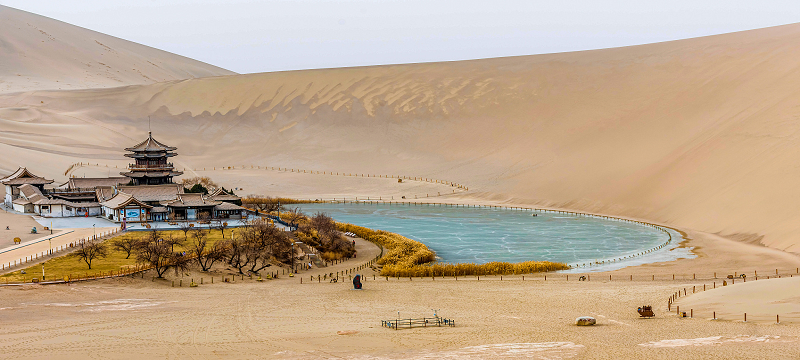
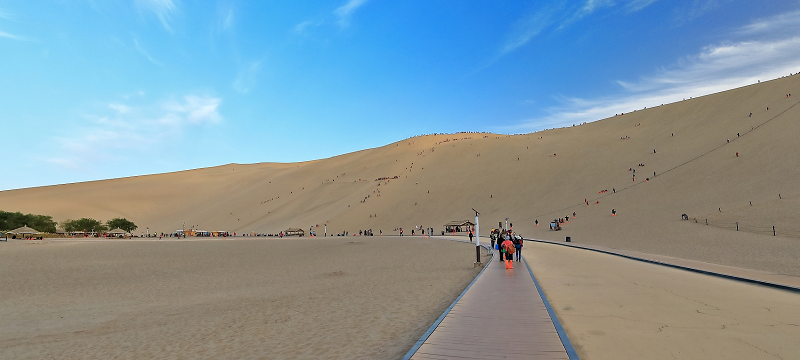
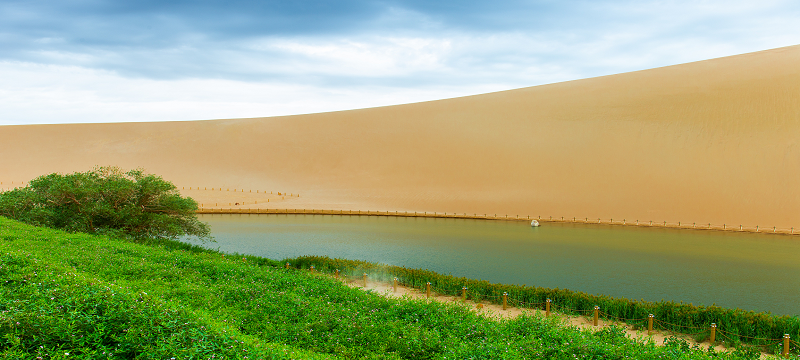
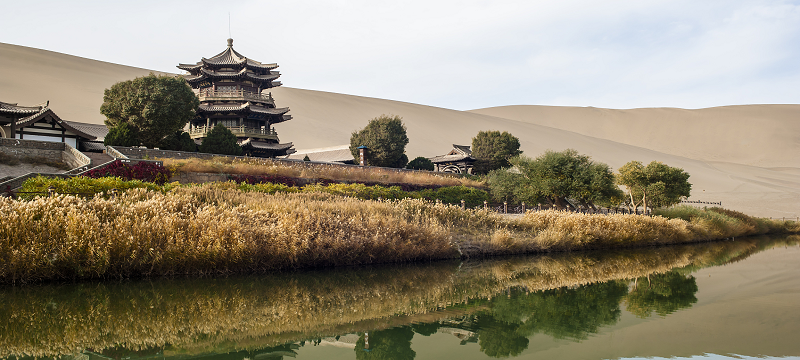
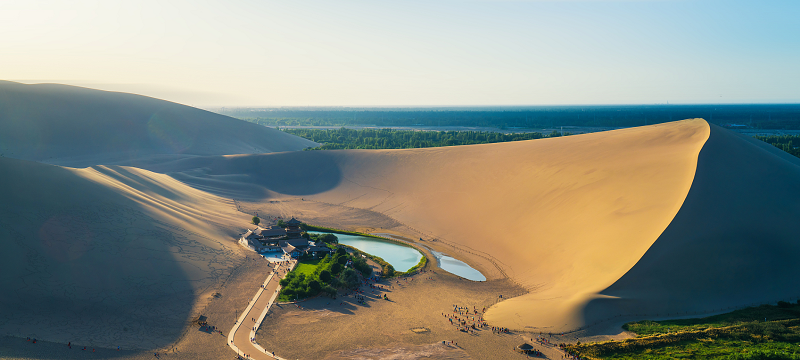





Crescent Moon Spring
A serene oasis in Gansu's desert, shaped like a crescent. Surrounded by Mingsha's dunes, it's a miraculous 2,000-year-old water source never dried up.
1. Introduction
Crescent Moon Lake (月牙泉) is a breathtaking natural wonder nestled among the towering Mingsha Shan (Singing Sand Dunes) near Dunhuang. This crescent-shaped spring has defied the harsh desert climate for over 2,000 years, never drying up despite being surrounded by endless sand. The lake spans 218 meters long and 54 meters wide, with crystal-clear waters reflecting the surrounding dunes and historic pavilions. A symbol of resilience, it was a vital Silk Road watering hole and remains one of China’s most iconic desert landscapes.
2. Historical Background
The lake’s origins trace back to ancient groundwater sources replenished by underground rivers from the Qilian Mountains. Han Dynasty (206 BC–220 AD) records mention it as "Yaquan" (Medicine Spring), believed to have healing properties.
During the Tang Dynasty (618–907 AD), it became a pilgrimage site for Buddhist monks traveling to Mogao Caves. Temples were built along its shores, though only the Mingsha Temple ruins remain today. Legends claim the lake is a fallen mirror of the Moon Goddess, protected by divine intervention—scientific studies credit its survival to unique wind patterns that push sand uphill, preventing burial.
3. Key Spots & Activities
Mingsha Pavilion (鸣沙阁): A restored Tang-style tower offering panoramic lake views.
Desert Photography Points: Best shots at sunrise/sunset when dunes turn gold.
Camel Rides (100RMB): Traverse the dunes like Silk Road merchants.
Boat Rowing (50RMB): Rare chance to paddle in a desert oasis (seasonal).
Sand Sledding (20RMB): Zoom down adjacent dunes on wooden boards.
4. Suggested Routes
Classic Visit (2–3 hours):
Enter at sunrise → climb nearby dunes → circle the lake → explore pavilions.
Sunset & Stargazing Combo:
Arrive by 6 PM → watch dunes change color → stay for Milky Way views (summer).
Full Desert Experience:
Pair with Mingsha Shan activities (ATV rides, paragliding).
5. Best/Worst Seasons to Visit
Best: April–June & September–October (mild temps, 15–25°C).
Avoid: July–August (sand temps hit 60°C+) and dust storm seasons (March–April).
6. Transportation
From Dunhuang City:
Taxi: ~15RMB (10 min, 6 km south).
Bus: No. 3 (2RMB, drops at Mingsha Shan entrance, then 10-min walk).
From Mogao Caves: 30 km; taxi (~80RMB, 40 min).
7. Tickets & Optional Fees
Entrance Fee: Included in Mingsha Shan ticket (110RMB, valid 3 days).
Camel Ride: 100RMB (1 hr, includes lake loop).
Electric Cart (to lake): 20RMB (saves a 15-min walk).
8. Special Notes
No Swimming: The lake is protected; touching water is discouraged.
Footwear: Sand-proof shoe covers (15RMB rent) recommended.
Drone Ban: Strictly prohibited to preserve the ecosystem.
Night Visits: Allowed with ticket, but no artificial lighting—bring a flashlight!
Local Secret: The lake shrinks slightly in winter (Dec–Feb) but never freezes due to underground warmth. For the clearest reflections, visit at dawn when winds are calm.
